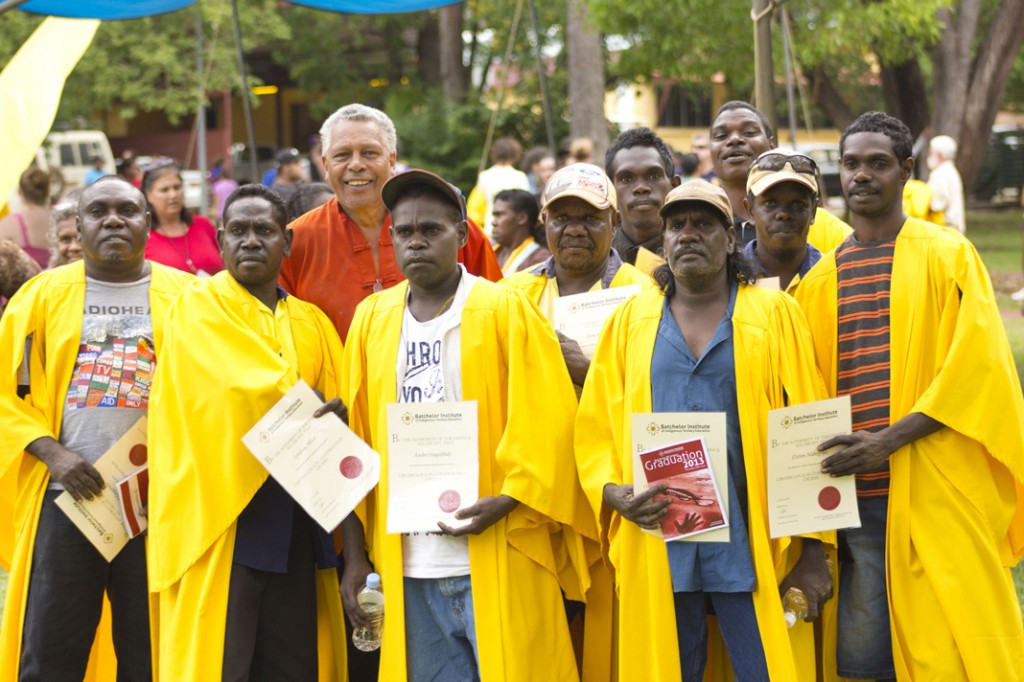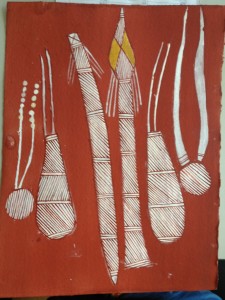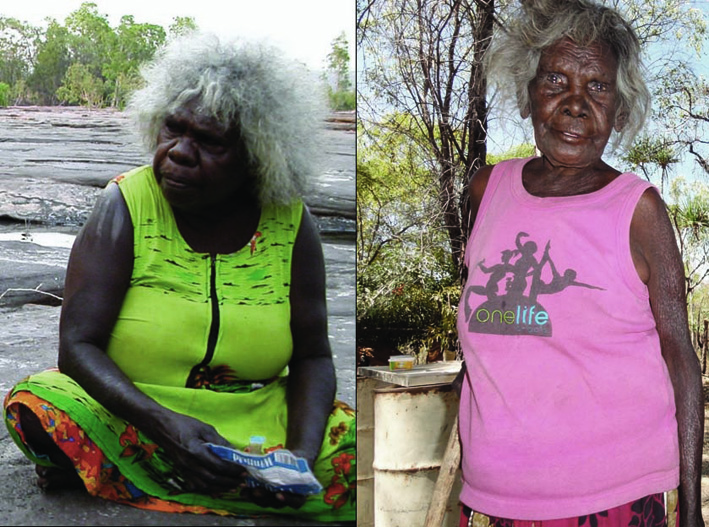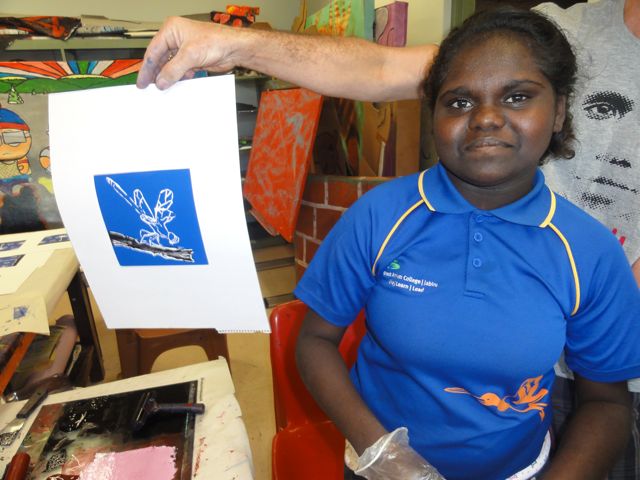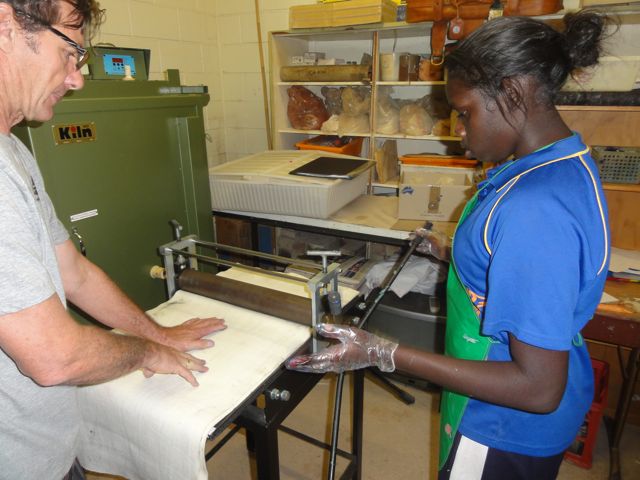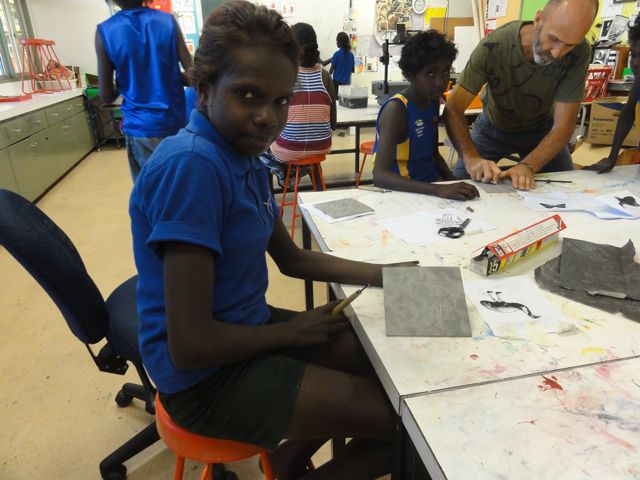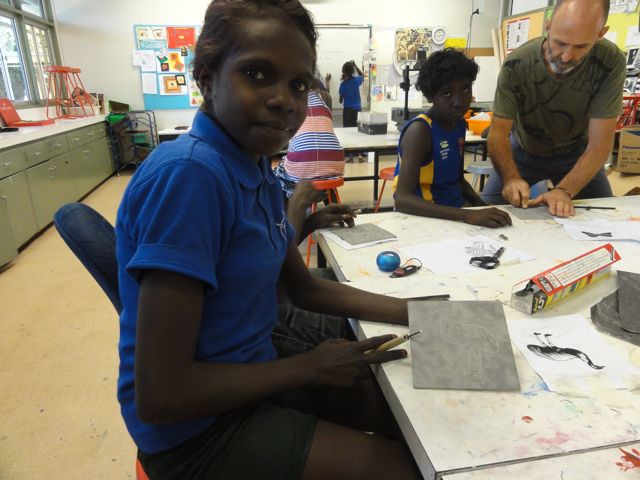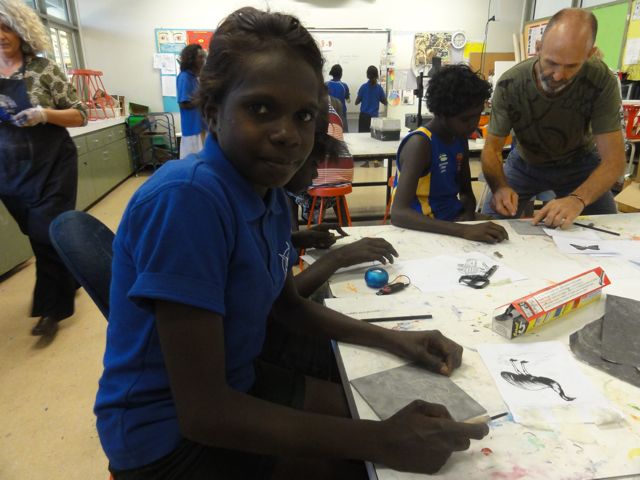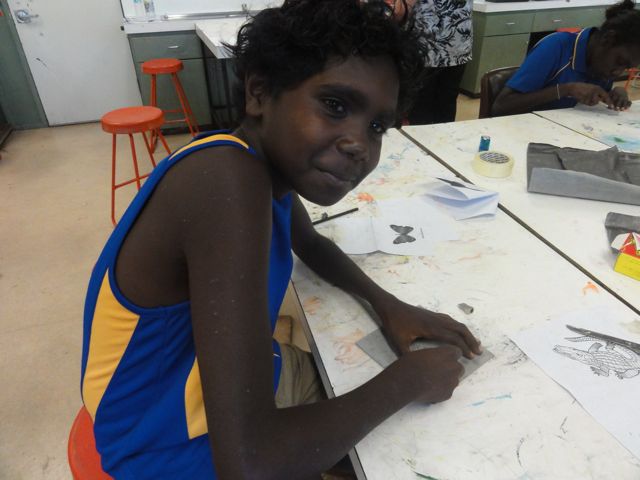Graduate birriyimeng, Batchelor College.
Photos by Kevin Arthur, BIITE.
Tom Wood and Raymond Guymala have a planning discussion the day before their trip from Gunbalanya to Batchelor College on 20 June 2013 for their graduation ceremony at Batchelor Institute of Indigenous Tertiary Education (Certificate 2 in Construction). Thanks to Andy Peart, CDEP Training Officer at Gunbalanya for the recording and thanks to Kevin Arthur (BIITE) for the photos. Thanks to Tom Wood and Raymond Guymala too.
[soundcloud url="http://api.soundcloud.com/tracks/98673408" params="" width=" 100%" height="166" iframe="true" /]
T= Tom, R= Raymond, A= Andy Peart.
[00:00:00.00] R: Tom, wanjh balekeno ngarri-re malayi?
[00:00:04.06] T: malaywi karri-re
[00:00:06.12] R: balekeno kukabel?
[00:00:09.00] T: kukabel karri-re o kumurrng
[00:00:12.24] T: nungka njaleken karri-re?
[00:00:16.12] R: graduate
[00:00:19.04] T: graduate karri-yime
[00:00:19.24] T: kore birri-wern?
[00:00:23.03] R: mulil
[00:00:25.23] T: malayi karri-re, kumurrng, kukabel
[00:00:32.06] T: karri-dungbebme
[00:00:33.20] T: kareh kanjdji kah-dungyo kah-kakyo wanjh karri-dolkkan kunukka six o'clock
[00:00:40.05] T: darnki kah-bebme name karri-re karri-bolkbawon Kunbarlanja
[00:00:43.22] T: seven o'clock mani bas karri-mang mani manu ka-bidbun, kan-bekkan
[00:00:51.23] R: wo kurebeh wanjh ngarr-ngokkowiyidurndeng
[00:00:55.19] yo, karri-ngokkowiyidurndeng
[00:01:00.19] A: njale, njale kabirri-re?
[00:01:02.23] T: murrika karri-re, mandengeyi
[00:01:05.05] R: murrika ngarri-re
[00:01:06.01] mandengeyi
[00:01:22.02] A: Bale ngurri-borlbmeng?
[00:01:09.20] R: aa... building
[00:01:10.18] building, building construction ngarri-re... manekke, ...graduate ngarri-yime
[00:01:15.13] R: graduate
Vocabulary:
balekeno when
malayi, malaywi tomorrow
-re to go
kukabel morning
njaleken why
-dungbebme 1. arrive in daylight 2. morning rising of the sun
name short version of namekke that
kunukka like that, at that time, that topic mentioned
-mang to get
-bolkbawon leave a place, depart from a place
kurebeh other side, at the other place/other end
ngokkowi evening
-ngokkowiyidurndeng return in the evening
murrika, mandengeyi motor vehicle (car, truck)
-borlbme to learn, to become accustomed to
manekke that, that thing mentioned (of man- class)
njale what, how
wanjh then (sequential)
-dungyo sun be located, exist
-bidbun, go up, go upland
mulil lots, many (also a ceremony name)
Bonj
That is all.
